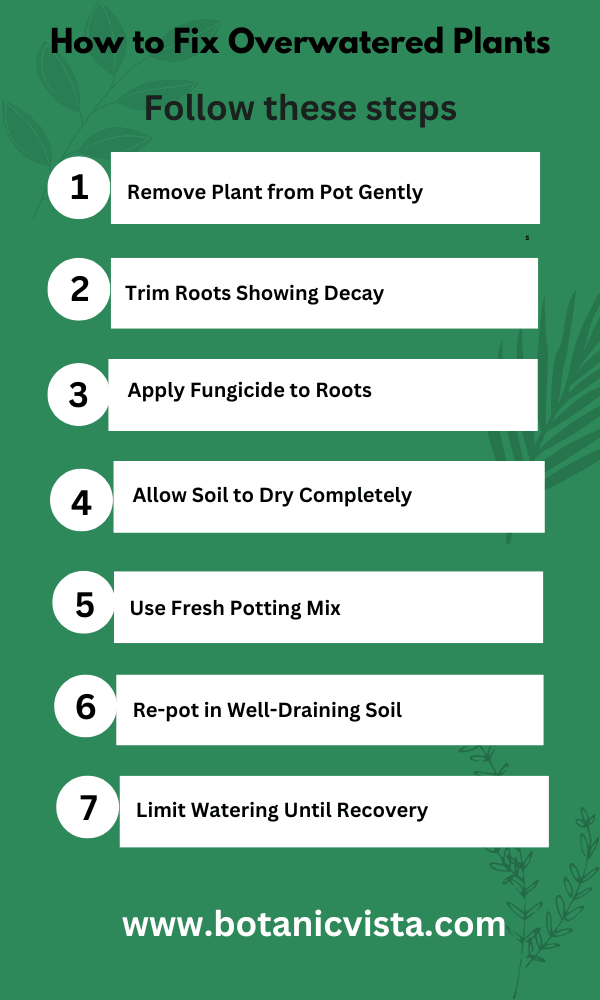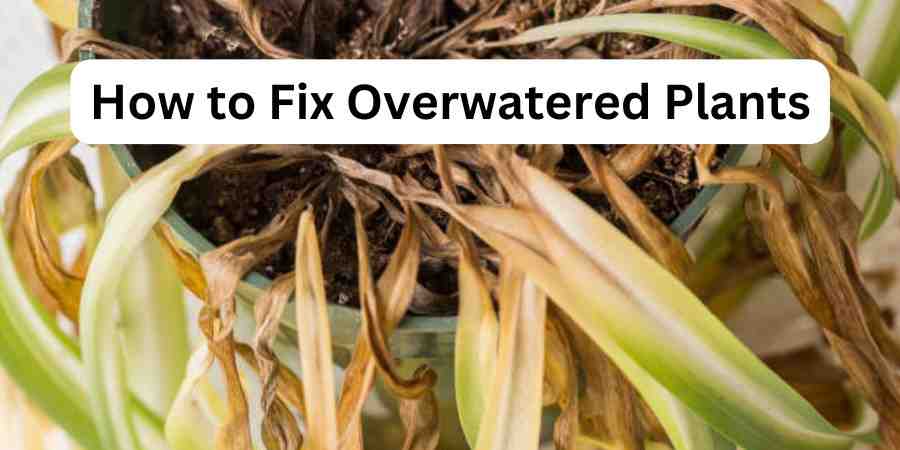Last Updated on October 14, 2024 by Jocelyn
Overwatering plants is something that many new plant owners, especially those just starting their gardening journey, face. It’s easy to think, “More water means happier plants,” right? But, believe it or not, too much water can harm your plants, making them feel like they’re drowning in a sea of moisture.
Think of it like this: if you were in a pool with no way out, it wouldn’t be fun for long, right? Plants feel the same when their roots are stuck in soggy soil.
When you overwater your plants, the soil becomes so wet that the roots can’t get the air they need, which is super dangerous for them. You might start seeing signs like yellowing leaves, drooping stems, or even a rotten smell coming from the soil.
But don’t worry, you can still save your plant! The first step is simple: stop watering it and move it to a dry spot. If the soil is too wet, repotting in fresh, dry soil can help.
Make sure to drain any excess moisture from the pot and let the soil dry out completely before watering again. With the right steps, your plant will soon be back to healthy growth!

Table of Contents
ToggleSigns of Overwatered Plants
When plants receive too much water, it disrupts their ability to take in oxygen, leading to many problems. The effects can be severe, from sluggish growth to more serious conditions like root rot. Recognizing the early warning signs is important to keep your plants healthy.
| Signs | Details |
| Yellowing | Leaves turn yellow due to blocked air pockets and discoloration starts to appear. |
| Mold | Fungi or mildew grows on the damp soil, indicating too much moisture. |
| Soft Stems | Stems become soft and brittle, a result of the roots drowning in water. |
| Sour Smell | The soil gives off a sour smell like sewer gas due to excess water. |
| Dark Roots | Roots turn dark and develop root rot due to lack of oxygen. |
| Wilting | Leaves start to wilt even though the soil is wet, signaling root damage. |
| Pests | Insects like gnats are attracted to the damp conditions around the plant. |
Quick Fixes for Overwatered Plants
If you’re facing a tricky issue with your plants, don’t worry—it’s something you can fix! If you’ve noticed your plant’s leaves turning yellow or the soil staying soggy, it’s time to step in and help your plant recover.
Follow these simple steps to help your plant recover, and you’ll be impressed by how quickly it can regain its strength.
1. Remove the Plant from the Pot
Carefully take the plant out of its pot. If the soil is very wet, it may be stuck, so gently shake the pot to loosen it. Once out, check the root ball for any signs of decaying roots. Healthy roots should be slightly firm and white; mushy or black roots indicate root rot.
2. Prune Damaged Roots
Using clean, sharp scissors, prune away any damaged or mushy roots. This is especially important to stop the decay from spreading. Be careful to leave as many healthy roots as possible for the plant’s recovery.
3. Apply Fungicide
After pruning any damaged roots, it’s a good idea to apply a fungicide. This will help protect your plant from fungal infections as it recovers.
4. Dry Out the Soil
Now, it’s time to let the plant soil dry. Place it in a shady spot with good air circulation. The roots should dry out completely before you re-pot the plant. This step helps prevent further root rot.
5. Prepare Fresh Soil
While the plant dries, prepare a new pot with fresh, porous soil. Mixing in grit or sandy soil can improve drainage and airflow. Ensure the pot has a drainage hole at the bottom to allow excess water to escape.
You can also use mulch to help retain moisture and regulate soil temperature. Additionally, layer soil properly to create optimal conditions for your container garden.
6. Re-Pot the Plant
Once the roots are dry, place the plant in the new pot. Fill the pot with the fresh potting mix, making sure to cover the roots well. Avoid packing the soil too tightly; it should be slightly firm but not compacted.
7. Position the Plant in a Shady Spot
After re-potting, place the plant in a shady area for a few days. This helps reduce stress and allows the plant to focus on root health. Avoid direct sunlight during this period, as the plant is vulnerable to burning.
8. Water Carefully
Finally, water the plant sparingly until it shows signs of recovery. Ensure the soil is properly dried out before watering again. Over time, as the plant recovers, you can slowly increase the watering amount, but always make sure the soil is not too wet.
Tips to Prevent Overwatering
Imagine if your plants could talk—they’d tell you when they’ve had enough water. But since they can’t, it’s up to us to figure it out. The trick is to give your plants just what they need without going overboard.
Let’s make sure they’re happy by learning a few simple tips to keep them growing strong.
| Tip | Description |
| Check Soil Moisture | Use your finger to test if the soil is still moist before watering. |
| Choose Well-Draining Soil | Opt for soil that allows excess water to escape easily, preventing water from pooling at the roots. |
| Use Pots with Drainage Holes | Ensure pots have holes to allow water to drain out, reducing the risk of root rot. |
| Adjust Watering Frequency | Water less frequently during wintertime or when plants are dormant. |
| Consider Climate | In tropical or rainforest climates, water less frequently as the environment is naturally moist. |
FAQ’s
Q: How to Fix Soggy Soil on an Indoor Plant?
A: If your indoor plant has soggy soil, start by placing it on newspaper to absorb excess water. Gently remove the plant from its original pot and check the root ball for damage. Change the layer of soil, then put the plant back. Remember, water it only a few times until it recovers.
Q: What Are the 3 Signs of Water Stress in Leaves Plants?
A: When plants are overwatered, their leaves may droop or curl, change to yellow or grayish hues, and eventually drop off, especially in cool conditions. To help them recover, reduce watering and allow the soil to return to normal moisture levels.
Q: Is It Worse to Overwater or Underwater Plants?
A: Overwatering is likely worse because it causes soggy soil, leading to lethal root rot. Underwatering dries out the soil, but the plant has a better chance to survive once watered again.
Q: Why is My Plant Wilting but the Soil is Wet?
A: When soil is wet but your plant is wilting, it’s likely due to transpirational wilt. Moisture loss from leaves in high temperatures or windy conditions occurs faster than the plant can take up water. Moving the plant to a cooler, less windy spot may help.
Conclusion
To revive overwatered plants, it’s important to act quickly. Start by letting the soil dry out completely, and if needed, repot your plant in fresh, well-draining soil.
Moving forward, water your plants only when the top layer of soil feels dry so they get the right amount of moisture. With consistent care and attention, your plants will recover and grow strong.
Ready to bring your plants back to life? Begin with these simple steps and see them flourish with the care they deserve!

